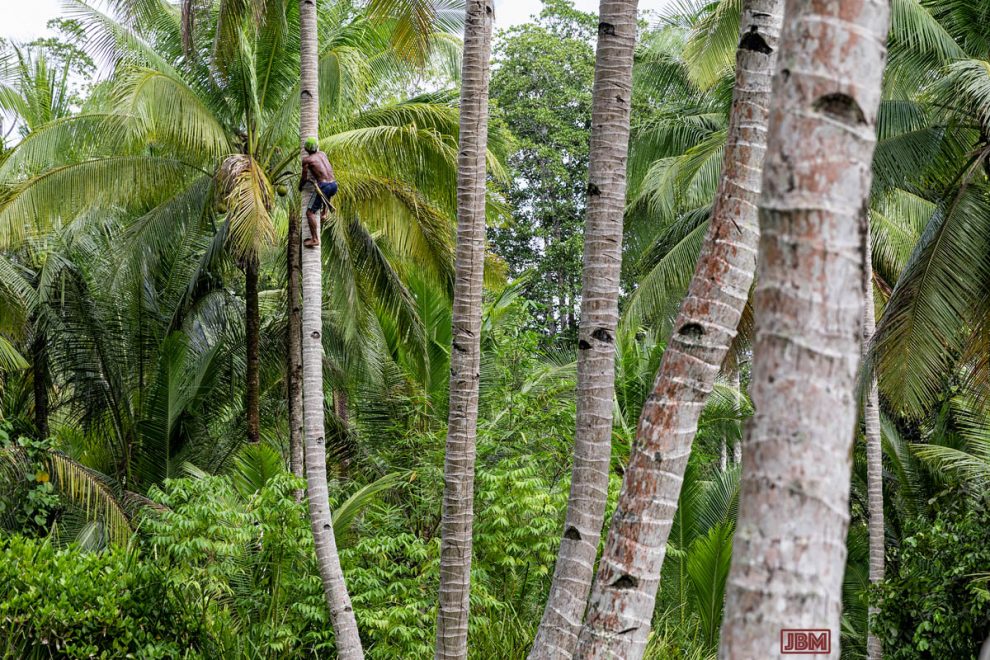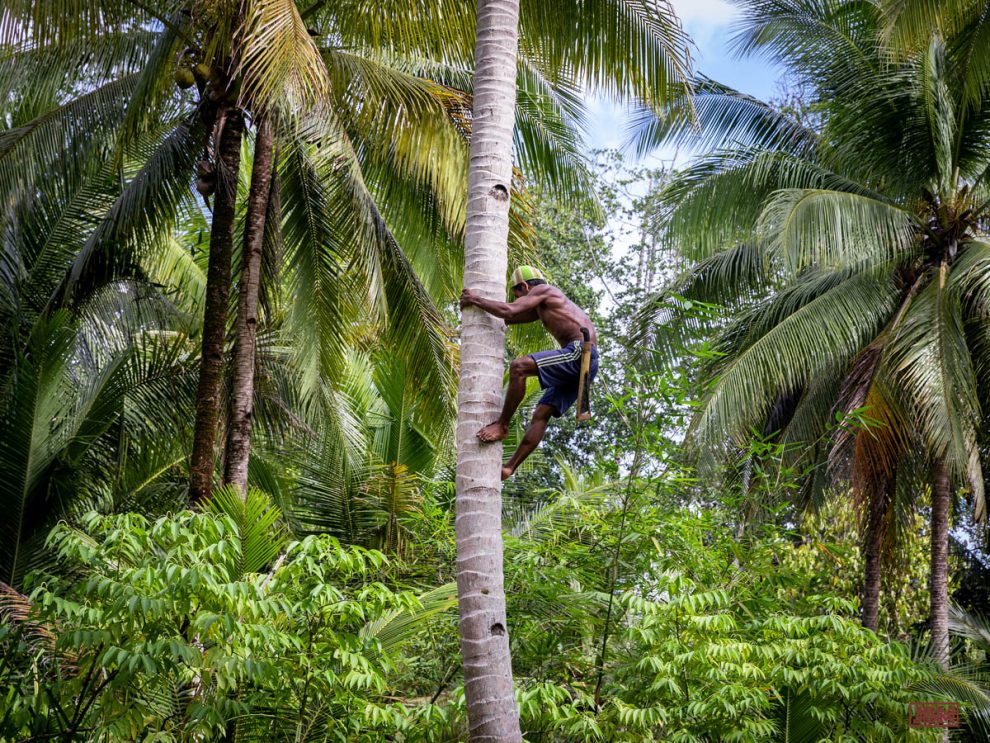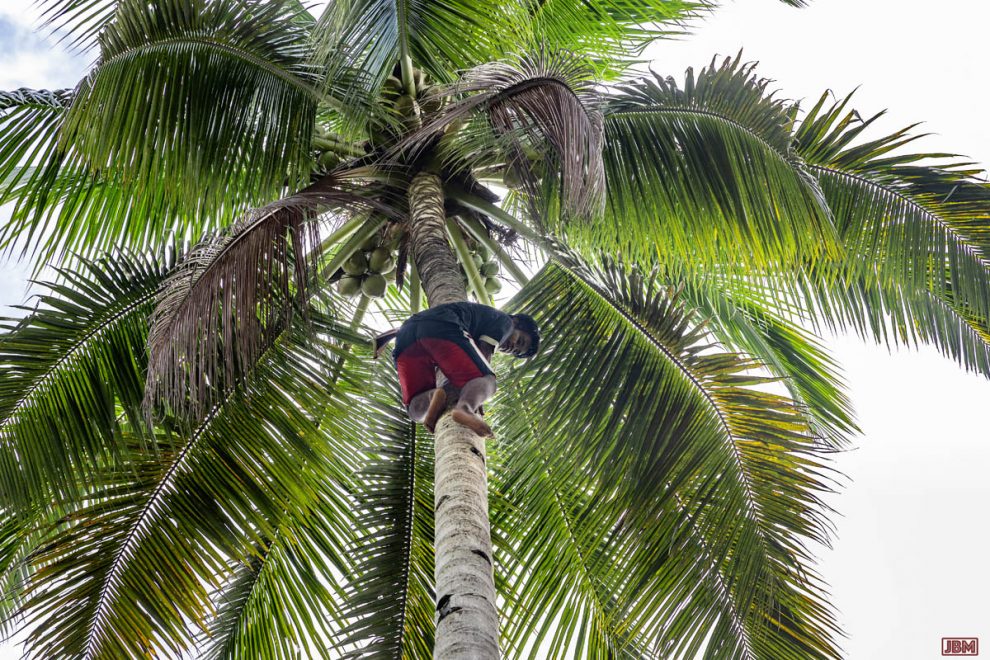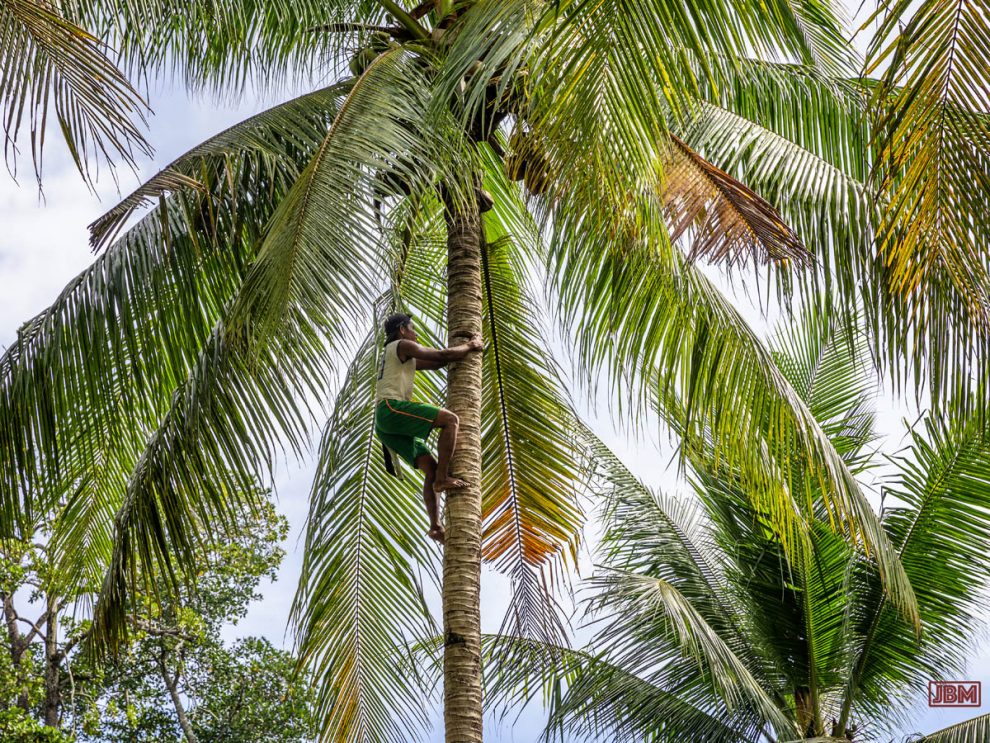Next time you open a can of coconut milk (or sip on coconut water or perhaps enjoy a lamington crusted with crumbs of desiccated coconut), spare a thought for the people who harvest the coconuts.
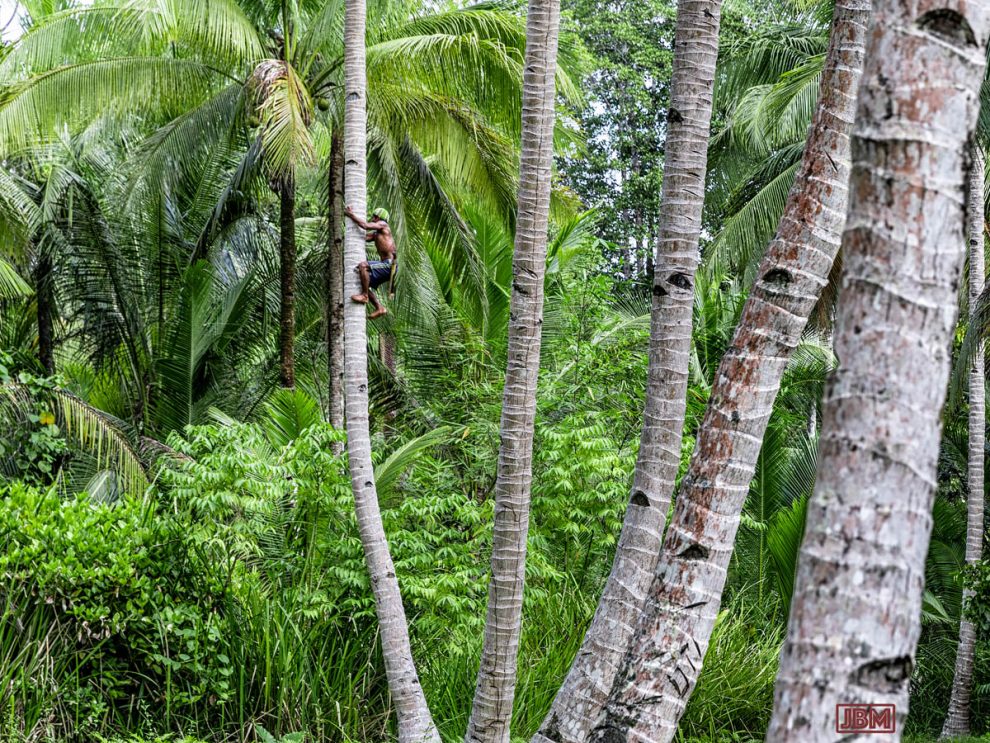
In some places, mature fruit is cut from the smaller palms (Cocos nucifera) using a long bamboo pole with a blade on the end.
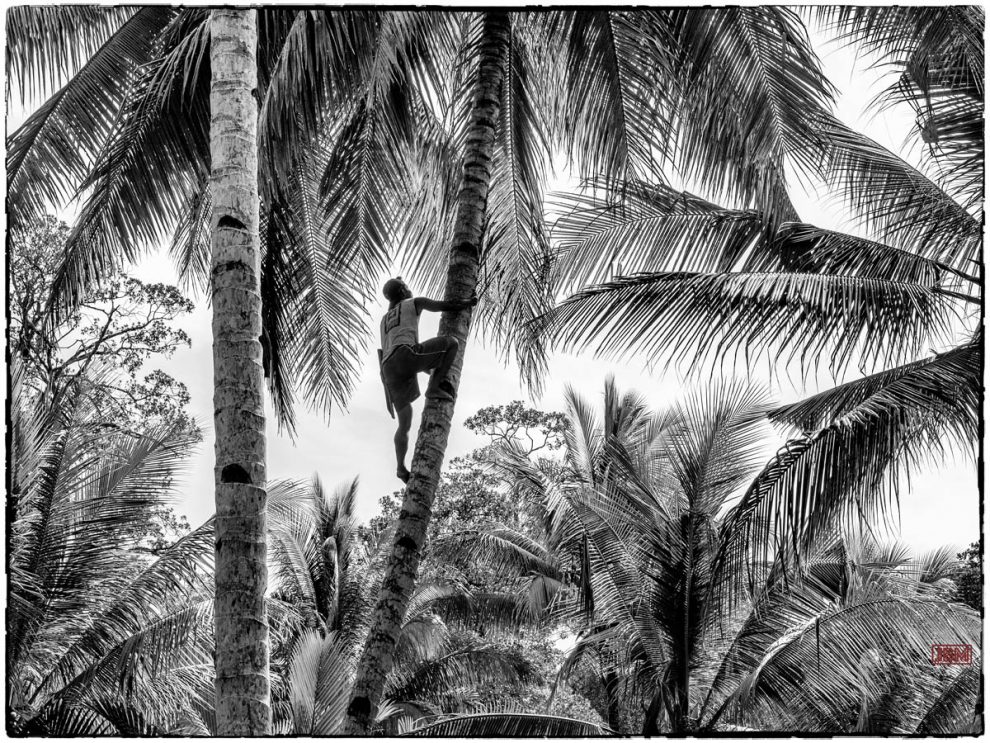
In parts of Thailand, trained macaques are used to climb and remove the coconuts. In other locations (e.g. New Guinea) they often just wait for the fruit to fall naturally.
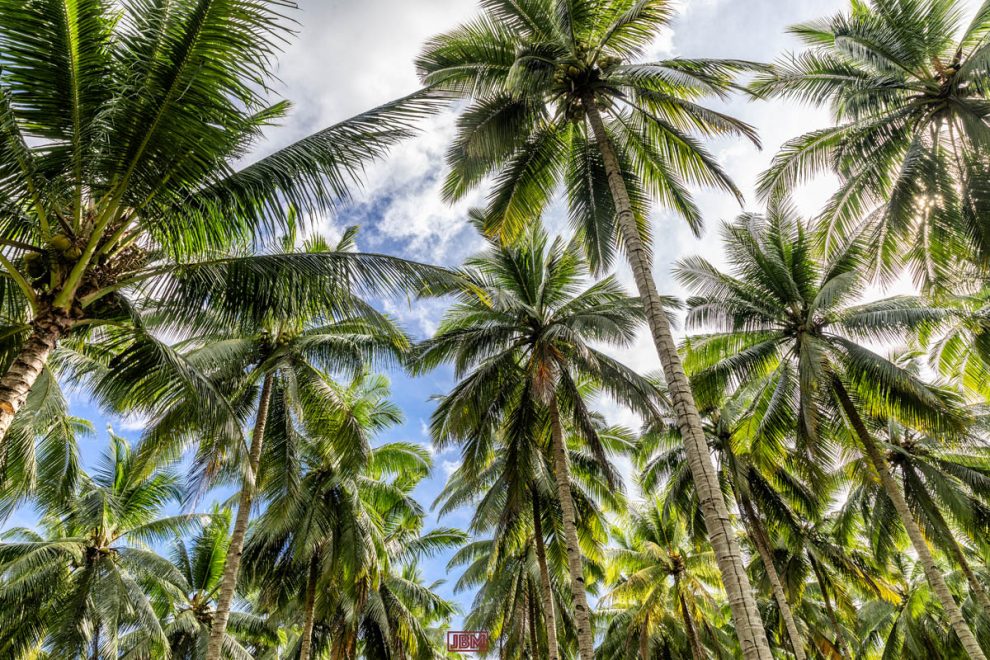
But in Indonesia, which is the largest producer worldwide, the usual method is for plantation workers to free climb to the top of the palms (which can be up to 25 metres tall) and cut the coconuts off with a long knife, dropping them to the ground below.
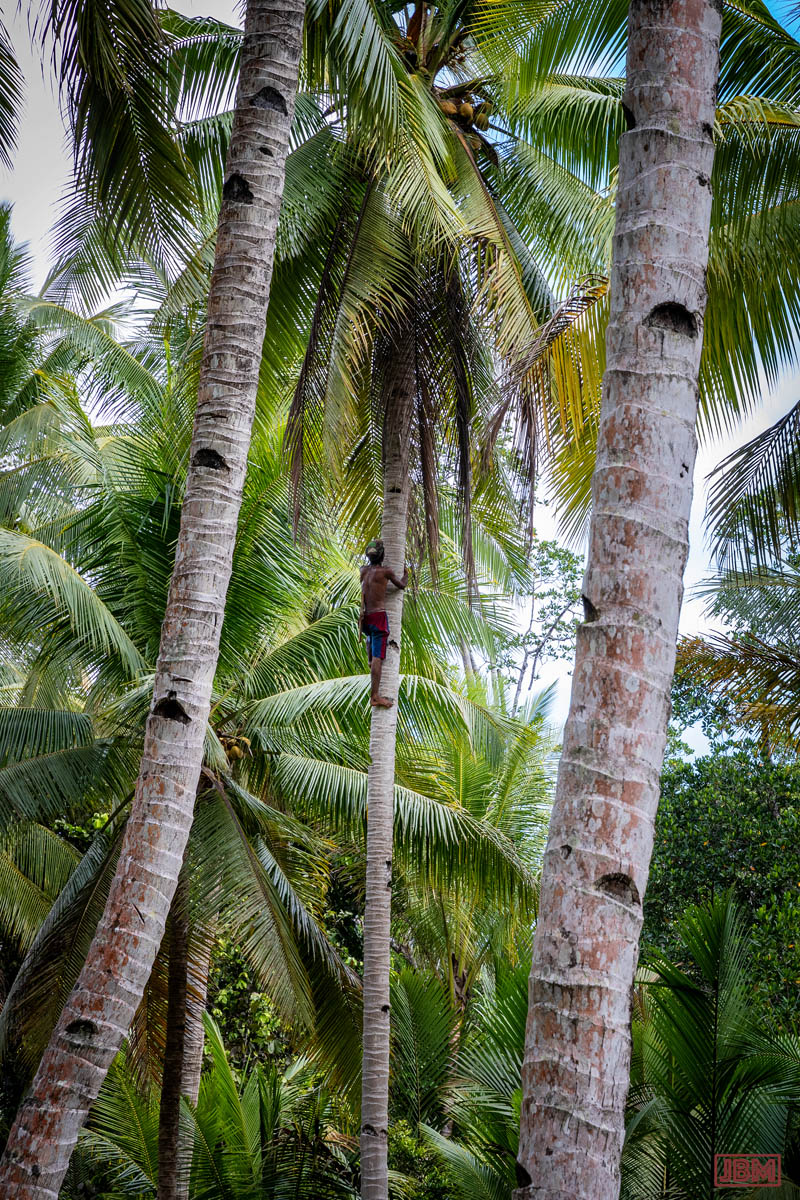
Safety harnesses are rarely used.
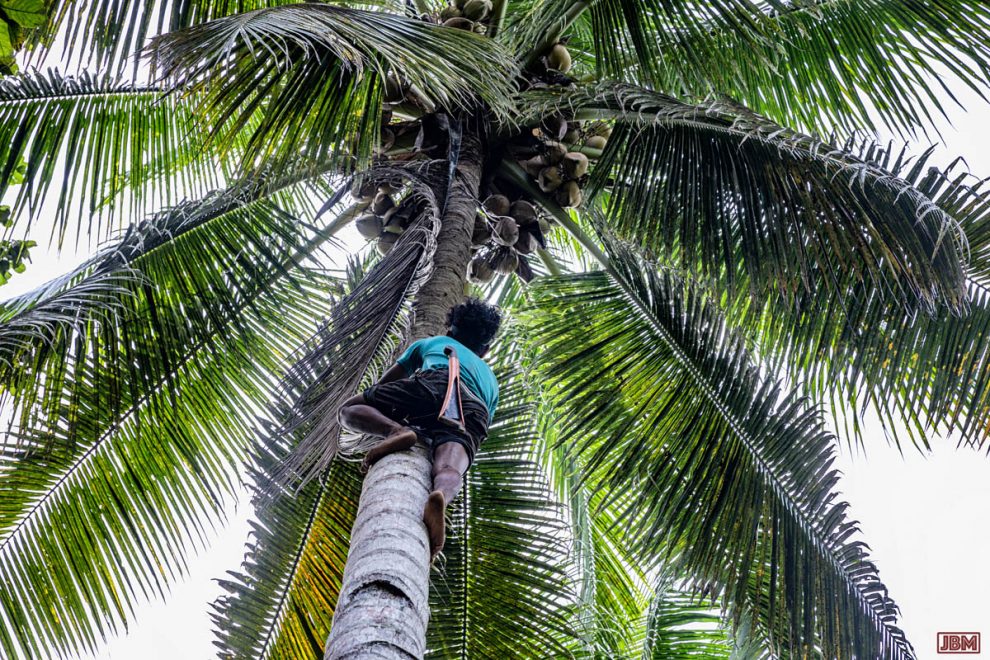
For copra production, it’s best to harvest the coconuts at about 12 months after flowering. So, to optimise production, each palm is climbed about once every six weeks.
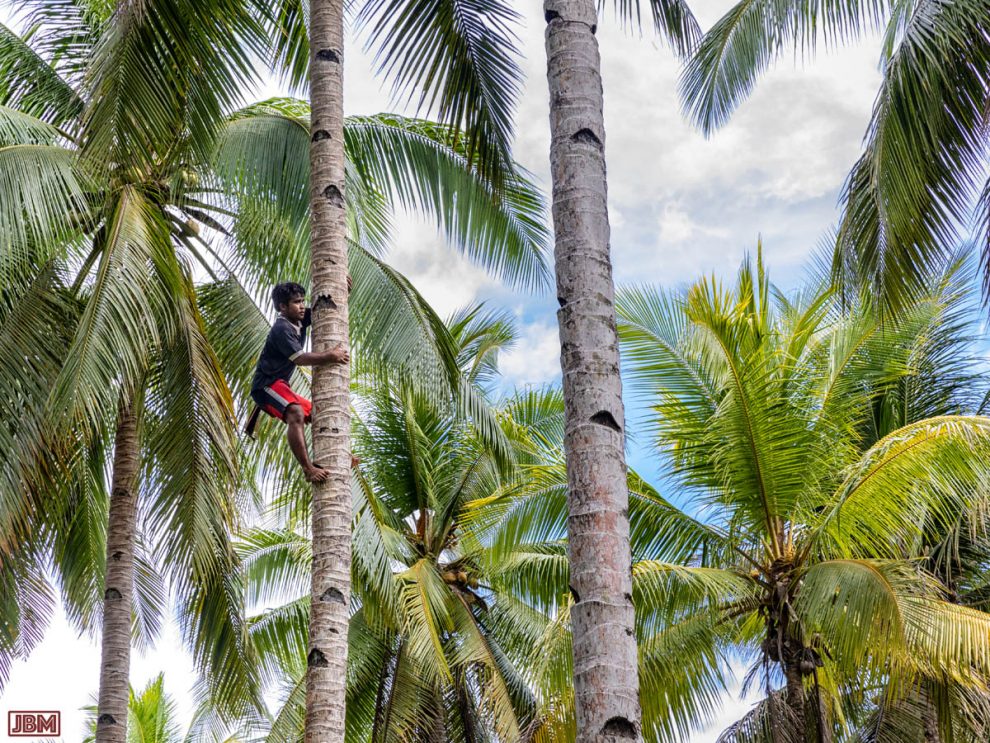
The trunk of the palm has notches cut into it to facilitate the climb. But it’s hard and dangerous work, and serious injuries and deaths are all too common.
